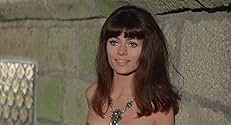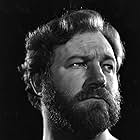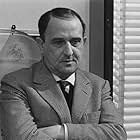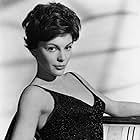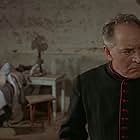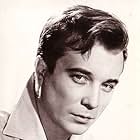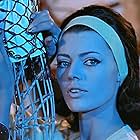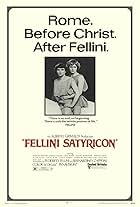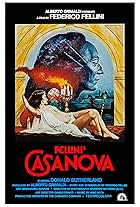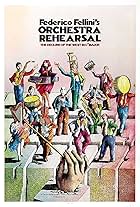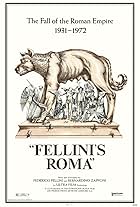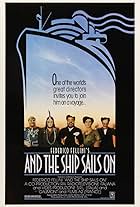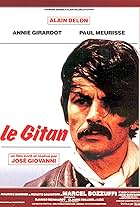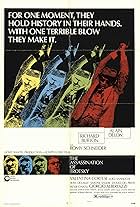IMDb RATING
6.4/10
7.2K
YOUR RATING
A trio of Edgar Allan Poe adaptations about a cruel countess haunted by her cousin's stallion, a sadistic soldier haunted by his doppelgänger, and an alcoholic actor haunted by the Devil.A trio of Edgar Allan Poe adaptations about a cruel countess haunted by her cousin's stallion, a sadistic soldier haunted by his doppelgänger, and an alcoholic actor haunted by the Devil.A trio of Edgar Allan Poe adaptations about a cruel countess haunted by her cousin's stallion, a sadistic soldier haunted by his doppelgänger, and an alcoholic actor haunted by the Devil.
- Awards
- 2 nominations
Françoise Prévost
- Friend of Countess (segment "Metzengerstein")
- (as Francoise Prevost)
Marie-Ange Aniès
- A courtesan (segment "Metzengerstein")
- (as Marie-Ange Anies)
Katia Christine
- Young girl on the dissection table (segment "William Wilson")
- (as Katia Christina)
Storyline
Did you know
- GoofsToby is offered a magazine pictorial in which he is to portray "the young Greek god Mars" (as translated in captions). Mars was the Roman god of war. The Greek god of war was Ares.
- Quotes
Giuseppina (segment "William Wilson"): The card-player resembles the lover. He gets tired. No staying power, my dear.
- Crazy creditsAfter the opening title credits, the following handwritten text (from Edgar Allan Poe's first published story, "Metzengerstein" - which is also adapted as the first story of this film) is displayed: "'Horror and fatality have been stalking abroad in all ages. Why then give a date to the story I have to tell?' Edgar Allan Poe."
- Alternate versionsThe whipping of Giuseppina was cut in the original 1973 UK cinema release (titled "Tales of Mystery"), and subsequent releases were also edited. The 15-rated 1984 video (as "Powers of Evil") completely missed the entire "William Wilson" story, and the 18-rated 1990 French Collection VHS (titled "Histoires Extraordinaires: Tales of Mystery and Imagination") received over a minute of cuts to the whipping scene and shots of Wilson caressing a girl with a scalpel. The Arrow Blu-ray release (titled "Spirits of the Dead") is the full uncut version.
- ConnectionsEdited into Toby Dammit (1968)
- SoundtracksRuby
Sung by Ray Charles
Lyrics by Mitchell Parish
Music by Heinz Roemheld
Published by Miller Music Corporation, represented by Curci
Featured review
It's interesting that no IMDb commenters seem to have caught Malle's significant homage in "William Wilson."
Malle makes Wilson far more sadistic than Poe's character. In the opening school sequence, Poe's Wilson is, to be sure, a leader of the other students: "the ardor, the enthusiasm, and the imperiousness of my disposition, soon rendered me a marked character among my schoolmates, and by slow, but natural gradations, gave me an ascendancy over all not greatly older than myself." Any sadism is, at most, implied: "If there is on earth a supreme and unqualified despotism, it is the despotism of a master mind in boyhood over the less energetic spirits of its companions." In Poe, Wilson does not try to strangle his doppelganger, nor is he expelled from the school. He approaches the other's bed at night, apparently sees his own face on the sleeping boy and "passed silently from the chamber, and left at once, the halls of that old academy, never to enter them again."
In Malle's film, Wilson is torturing another student as a snowball fight rages in the background. The doppelganger makes his first appearance by hitting Wilson with a snowball. The snow fight, the torture, the significant hit by a snowball, the expulsion from school are not in Poe's tale.
But all these elements ARE in Jean Cocteau's novel LES ENFANTS TERRIBLES. The snowball fight not only is featured in Jean-Pierre Melville's film of the novel, but Cocteau filmed the scene earlier in his own BLOOD OF A POET. The torture is briefly in Melville's film, but described more fully in the novel: "By the spasmodic flaring of the gas lamp he could be seen to be a small boy with his back against the wall, hemmed in by his captives...One of these...was squatting between his legs and twisting his ears...Weeping, he sought to close his eyes, to avert his head. But every time he struggled, his torturer seized a fistful of gray snow and scrubbed his ears with it." As the snow fight continues, Cocteau's iconic character Dargelos throws a snowball that hits another student and puts in motion the events of the novel/film.
Dargelos is the same sort of malignant leader of his schoolmates as Malle's young Wilson. The headmaster calls his influence on his classmates unhealthy, and after an outrageous act he is expelled from the school. Even more to the point, Dargelos has a doppelganger in the form of the character Agathe. In Melville's film Dargelos and Agathe are played by same person, and their mysterious resemblance is important to the story.
All of these added Cocteau elements are so strong that one assumes that Malle intended viewers to recognize the reference.
Malle makes Wilson far more sadistic than Poe's character. In the opening school sequence, Poe's Wilson is, to be sure, a leader of the other students: "the ardor, the enthusiasm, and the imperiousness of my disposition, soon rendered me a marked character among my schoolmates, and by slow, but natural gradations, gave me an ascendancy over all not greatly older than myself." Any sadism is, at most, implied: "If there is on earth a supreme and unqualified despotism, it is the despotism of a master mind in boyhood over the less energetic spirits of its companions." In Poe, Wilson does not try to strangle his doppelganger, nor is he expelled from the school. He approaches the other's bed at night, apparently sees his own face on the sleeping boy and "passed silently from the chamber, and left at once, the halls of that old academy, never to enter them again."
In Malle's film, Wilson is torturing another student as a snowball fight rages in the background. The doppelganger makes his first appearance by hitting Wilson with a snowball. The snow fight, the torture, the significant hit by a snowball, the expulsion from school are not in Poe's tale.
But all these elements ARE in Jean Cocteau's novel LES ENFANTS TERRIBLES. The snowball fight not only is featured in Jean-Pierre Melville's film of the novel, but Cocteau filmed the scene earlier in his own BLOOD OF A POET. The torture is briefly in Melville's film, but described more fully in the novel: "By the spasmodic flaring of the gas lamp he could be seen to be a small boy with his back against the wall, hemmed in by his captives...One of these...was squatting between his legs and twisting his ears...Weeping, he sought to close his eyes, to avert his head. But every time he struggled, his torturer seized a fistful of gray snow and scrubbed his ears with it." As the snow fight continues, Cocteau's iconic character Dargelos throws a snowball that hits another student and puts in motion the events of the novel/film.
Dargelos is the same sort of malignant leader of his schoolmates as Malle's young Wilson. The headmaster calls his influence on his classmates unhealthy, and after an outrageous act he is expelled from the school. Even more to the point, Dargelos has a doppelganger in the form of the character Agathe. In Melville's film Dargelos and Agathe are played by same person, and their mysterious resemblance is important to the story.
All of these added Cocteau elements are so strong that one assumes that Malle intended viewers to recognize the reference.
- How long is Spirits of the Dead?Powered by Alexa
Details
- Release date
- Countries of origin
- Languages
- Also known as
- Historias extraordinarias
- Filming locations
- Castel Gandolfo, Rome, Lazio, Italy(segment "Toby Dammit")
- Production companies
- See more company credits at IMDbPro
- Runtime2 hours 1 minute
- Color
- Aspect ratio
- 1.85 : 1
Contribute to this page
Suggest an edit or add missing content











